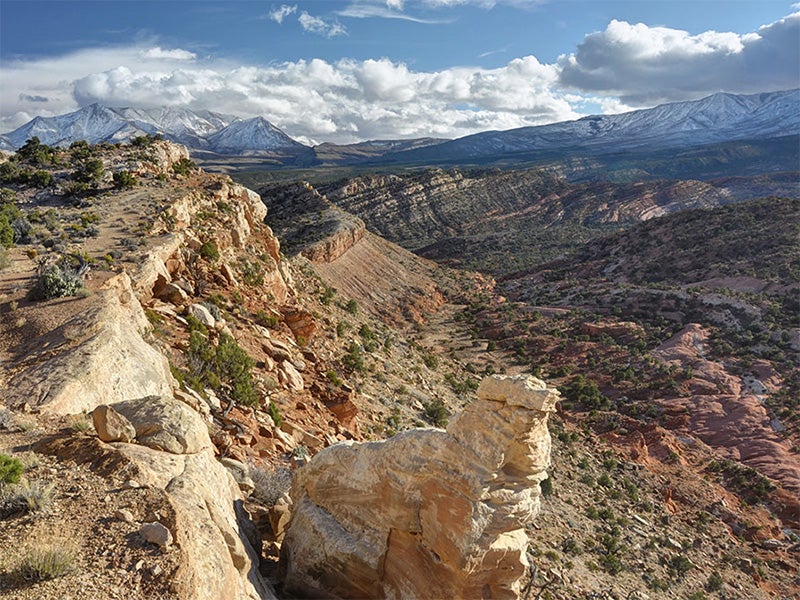BLM-Utah Will Revisit Decisions Regarding Off-Highway Vehicles And Oil And Gas Development In Red Rock Country
Victory
—Longstanding litigation over six BLM-Utah land use plans and travel management plans brought to a close
Contact
An order issued today by the United States Court of Appeals for the Tenth Circuit clears the way for BLM-Utah to begin implementing a comprehensive settlement agreement that will result in the completion of thirteen new off-highway vehicle travel management plans over the next eight years across eastern and southern Utah.
The BLM-Utah plans at issue guide land management decisions across more than 10 million acres of federal public lands in eastern and southern Utah, including some of the nation’s most remarkable red rock wilderness landscapes.
The settlement agreement marks the end to longstanding litigation filed in 2008 by a coalition of conservation groups which challenged six land use plans and travel plans that were completed at the end of the George W. Bush administration and designated a spider web of approximately 20,000 miles of routes where off-highway vehicles could drive on federal public lands.
The settlement requires BLM to revisit these decisions across more than six million acres of federal public lands, minimize the impacts of off-highway vehicles on cultural resources and wilderness landscapes that provide opportunities for solitude and primitive recreation, and monitor for illegal use.
BLM-Utah will also consider the designation of three areas of critical environmental concern (ACECs) and update and prepare air quality-related reports and studies that will inform future BLM decisions regarding oil and gas development. Read the settlement agreement.
The settlement agreement was reviewed and approved by a federal district court judge in Salt Lake City. In his order approving the settlement agreement, senior district court Judge Dale A. Kimball stated that the settlement “is a fair and lawful resolution of years of litigation” and is consistent with applicable federal law.
The BLM-Utah plans at issue guide land management decisions across more than 10 million acres of federal public lands in eastern and southern Utah, including some of the nation’s most remarkable red rock wilderness landscapes.
Quotes:
“With the settlement agreement in place we will work to make sure that BLM-Utah’s new travel management plans fully account for and protect Utah’s unique cultural resources and red rock wilderness lands,” said Stephen Bloch, Legal Director for the Southern Utah Wilderness Alliance. “The negotiations leading up to the settlement agreement were hard fought, and contentious. In the end, we came to a place that provided sufficient certainty to the conservation groups that BLM would take seriously its responsibilities to minimize the impacts of off-road vehicle use on all public resources, including wilderness.”
“This settlement is good news for Utah’s iconic public lands, including the lands surrounding Arches and Canyonlands National Parks, Glen Canyon National Recreation Area, and Dinosaur National Monument,” said Robin Cooley, Earthjustice Attorney representing the conservation groups. “BLM must take a fresh look at where it will allow off-highway vehicles to drive, this time with an eye towards protecting the very things that make Utah’s redrock country so special—its wildness, opportunities for solitude, and irreplaceable archaeological sites.”
“These amazing lands deserve thoughtful management for uses other than motorized recreation and oil and gas development, which are prioritized in the current plans,” said Nada Culver, Director the BLM Action Center at The Wilderness Society. “We hope to get to work on updated plans and management decisions once the settlement is approved.”
The following conservation groups are plaintiffs to the litigation and parties to the settlement agreement: Southern Utah Wilderness Alliance, The Wilderness Society, Natural Resources Defense Council, Sierra Club, Grand Canyon Trust, National Parks Conservation Association, National Trust for Historic Preservation, Rocky Mountain Wild, Great Old Broads for Wilderness and Utah Rivers Council.
The parties to the settlement agreement include the conservation groups, the off-highway vehicle group-intervenors, and the Bureau of Land Management. Several intervenors, including the Utah School and Institutional Trust Lands Administration and four oil and gas companies, do not oppose the agreement.
The conservation groups were represented by attorneys from Earthjustice, SUWA, NRDC, and the law firm of Waltzer, Wiygul and Garside.

Additional Resources
About Earthjustice
Earthjustice is the premier nonprofit environmental law organization. We wield the power of law and the strength of partnership to protect people's health, to preserve magnificent places and wildlife, to advance clean energy, and to combat climate change. We are here because the earth needs a good lawyer.